
Scotland is a land steeped in legend and myth, and its folklore is filled with a variety of terrifying creatures. From sea monsters and kelpies to banshees and hags, the monsters of Scottish mythology have been haunting the imaginations of people for centuries.
In this blog, we will delve into the world of Scottish monsters and explore their origins, characteristics, and the tales that surround them. So, grab a warm blanket and prepare to be scared as we take a journey into the world of Scottish mythology and its most fearsome creatures.
The history of Scottish monsters dates back to the earliest times of Scottish mythology and folklore. These creatures have been a part of Scottish tradition for hundreds of years and have been passed down from generation to generation through storytelling.
The legends and myths surrounding Scottish monsters are deeply rooted in the history and geography of Scotland. Many of these creatures were believed to inhabit the wilderness of the Scottish countryside, such as the rugged Highlands and the remote islands off the coast.
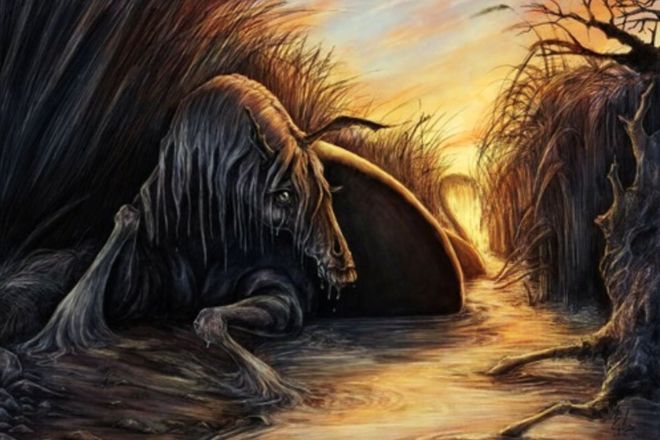
These areas were often seen as dangerous and mysterious places, where supernatural beings were said to roam freely. Scottish monsters were often used to explain natural phenomena and to warn people of danger. They were also used to entertain and scare audiences during storytelling and were an important part of Scottish culture and tradition.
Here are the 9 most scariest and mischievous creatures from Scottish folklore.
The Sluagh is a group of malevolent spirits from Scottish and Irish folklore. They are believed to be the restless souls of the dead who were not properly buried or who committed heinous crimes. The Sluagh fly through the skies at night and are said to swoop down on unwary travelers and carry them off to the Otherworld. They are associated with dangerous and remote locations and can be warded off by reciting prayers or carrying iron or salt. The Sluagh remains a popular and terrifying creature in Celtic mythology.
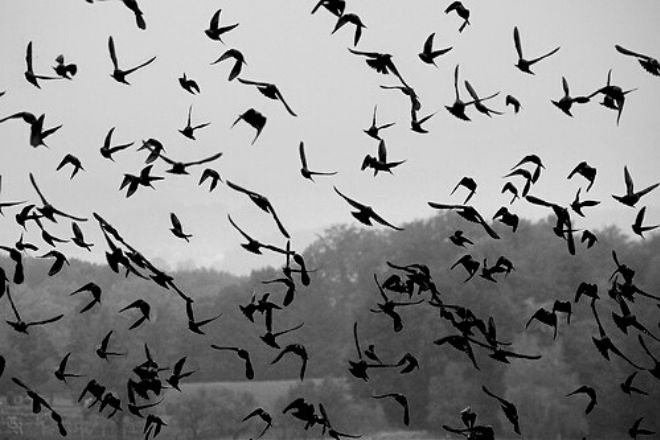
The Each Uisge is a legendary creature from Scottish folklore. Also known as the “water horse,” it is said to inhabit the lochs and rivers of Scotland. The Each Uisge is notorious for its ability to lure unsuspecting people onto its back, only to dive into the water and drown them. In some legends, the Each Uisge takes on the appearance of a beautiful horse or pony, while in others it is described as a shape-shifter that can assume human form.
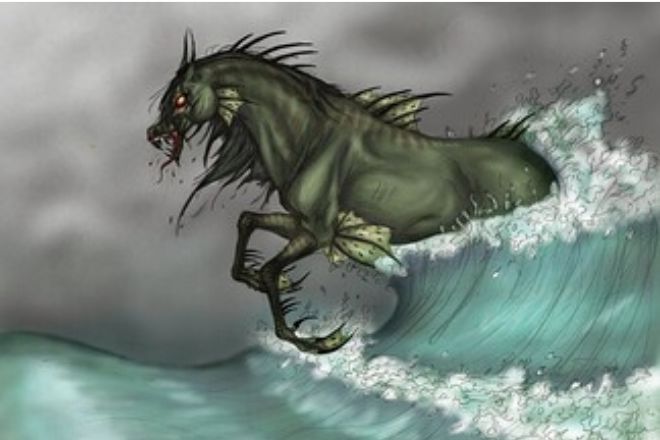
However, its skin is always cold and clammy to the touch, serving as a warning to those who might be tempted to approach it. Each Uisge is also associated with bad weather, and its appearance is said to be a sign of impending storms or floods. In some stories, brave and resourceful heroes are able to outwit or defeat the Each Uisge, but most encounters with this terrifying water horse end in tragedy.
The Nuckelavee is a terrifying creature from Scottish mythology, known as one of the most dreadful creatures in the land. It is depicted as a grotesque hybrid of a horse and a man, with the head of the horse attached to the body of a man. The Nuckelavee is said to be covered in seaweed and slime, making it repulsive to behold. Its breath is also said to be poisonous and capable of killing crops and cattle. According to legend, the Nuckelavee is a demonic entity that is associated with disease, drought, and famine.
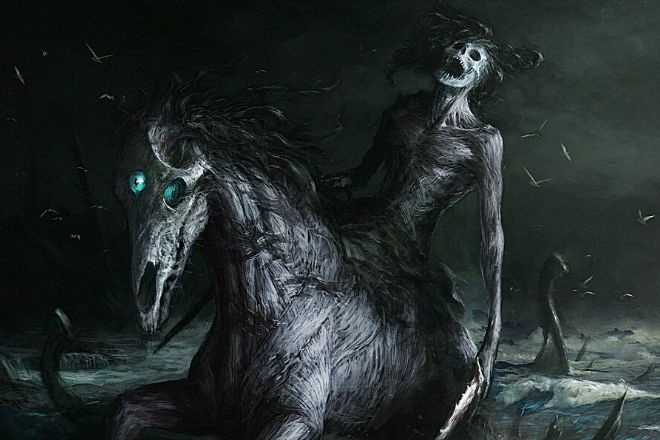
It is believed to reside in the depths of the sea but can emerge from the water to terrorize humans and animals alike. In some versions of the myth, the Nuckelavee can only be defeated by powerful magic or the intervention of supernatural beings. Despite its fearsome reputation, the Nuckelavee remains a popular figure in Scottish folklore, inspiring stories, artwork, and other creative works.
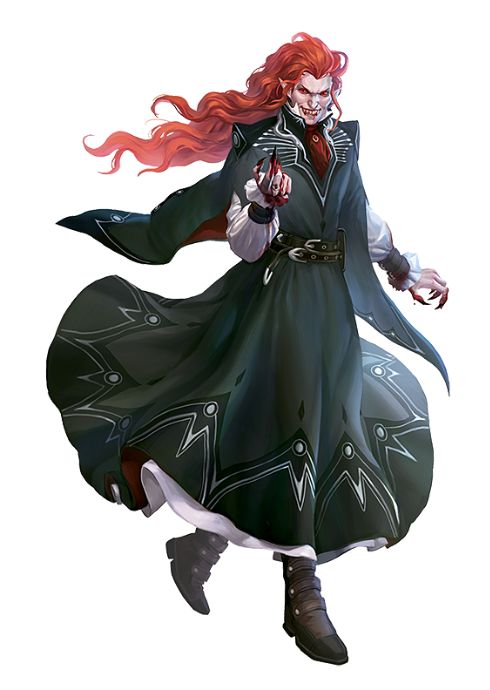
The Leanan Sidhe, also known as the “white fairy,” is a creature from Irish folklore. She is often depicted as a beautiful woman who inspires poets and artists but also lures men into the wilderness and drinks their blood. According to legend, the Leanan Sidhe is a supernatural being that offers inspiration and creativity to those she favors but also demands their life force in return. She is said to be most active during the winter months when the nights are longest, and her victims are often young men who are drawn to her beauty and charm. The Leanan Sidhe is
also associated with music and the arts, and some legends describe her as a muse or patroness of creativity. Despite her alluring appearance, the Leanan Sidhe is considered a dangerous and deadly creature, and those who encounter her are advised to be cautious and to resist her seductive powers.
The Bean Nighe, also known as the “washerwoman,” is a creature from Scottish folklore. It is believed to be a type of banshee, a ghostly figure associated with death and mourning. According to legend, the Bean Nighe is the ghost of a woman who died in childbirth and is doomed to wash the bloody clothes of the dead forever. She is said to be seen near streams or rivers, washing the clothes of those who are about to die. The Bean Nighe is often depicted as a solitary figure, dressed in a green or grey cloak and with long, tangled hair. In some versions of the legend, she is believed to be able to foretell the future, and her appearance is seen as a sign of impending death or disaster.
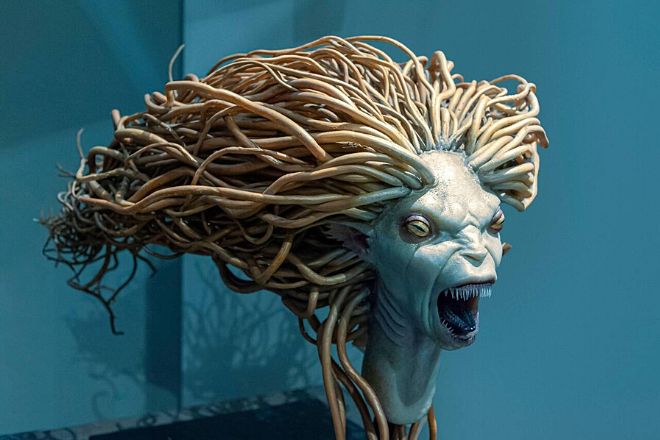
Despite her eerie reputation, the Bean Nighe is not considered a malevolent creature, and some legends even suggest that she can be appeased with offerings of milk or bread. Overall, the Bean Nighe remains a haunting and intriguing figure in Scottish folklore, inspiring stories, songs, and other forms of art.
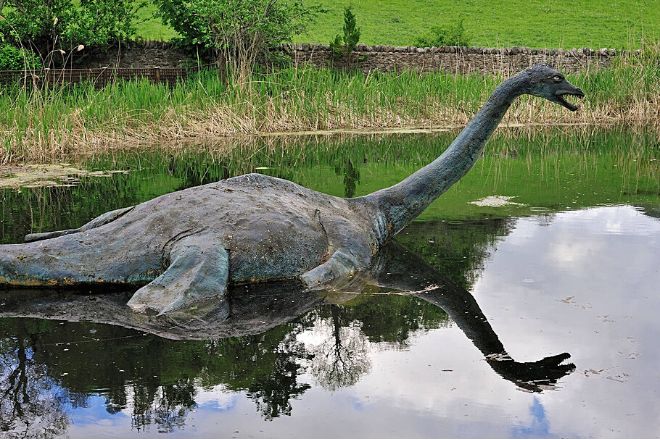
The Loch Ness Monster, or “Nessie,” is a serpent-like creature that lives in Loch Ness, Scotland. Sightings of Nessie have been reported since the 6th century, but no one has been able to prove its existence. Nessie is a famous cryptid that has become an important part of Scottish folklore and attracts visitors and enthusiasts from all over the world.
The Kelpie is a mythical water horse in Scottish folklore that is known for its beauty and deadly nature. It is said to lure unsuspecting people onto its back before diving into the water and drowning them. The Kelpie’s appearance varies, but it is often described as a beautiful horse or pony with a mane tangled with seaweed. Some versions of the legend say that the Kelpie can shape-shift into a human form to lure victims into the water. The Kelpie is a well-known figure in Scottish folklore and has been the subject of many stories and legends. It is often seen as a warning against the dangers of the water, particularly for children.
Selkies are mythical creatures in Scottish and Irish folklore that are said to be seals in the water but can transform into human form by shedding their skins on land. In human form, Selkies are described as beautiful and alluring, with long flowing hair and enchanting voices. Many stories and legends tell of humans falling in love with Selkies and trying to keep them on land by hiding their seal skins.
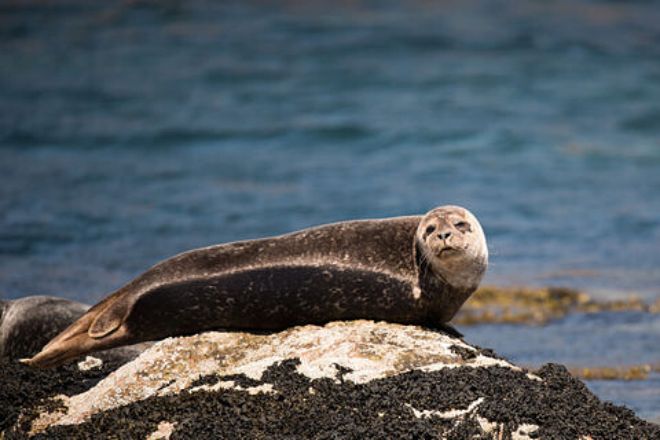
However, the Selkies always feel the call of the sea and eventually return to their watery homes. Selkies are often seen as symbols of the fleeting nature of love and the longing for freedom. The legends of the Selkies have been passed down through generations and continue to be a beloved part of Scottish and Irish folklore.

The Wulver is a mythical creature from Shetland folklore that is said to have the body of a wolf and the face of a human. Unlike many other creatures of folklore, the Wulver is said to be a friendly and benevolent creature that lives in the woods and helps travelers who are lost or in trouble. It is said to leave fish on the windowsills of poor families, but never reveals its true identity. The Wulver is often depicted as a solitary creature, preferring to live in the wild and avoid human contact. It is said to be fiercely protective of its territory and will defend it from any perceived threat. Despite its fearsome appearance, the Wulver is known for its kind and gentle nature, and is seen as a symbol of strength, courage, and compassion.
These are just a few examples of the many different types of Scottish monsters and mythical creatures that have been part of Scottish folklore for centuries.
Scottish monsters, also known as cryptids or legendary creatures, have been a popular subject for modern interpretations across various mediums. Probably the most famous of all Scottish monsters, the Loch Ness Monster has been the subject of numerous books, movies, and documentaries. From the classic film “The Private Life of Sherlock Holmes” to the recent TV series “Loch Ness,” the creature continues to captivate audiences with its mystery and intrigue.
Other popular Scottish monsters include the Kelpie, a shape-shifting water spirit that is often depicted as a horse, and the haggis, a small, furry creature with two legs shorter than the others to help it run quickly over the Scottish hills. These creatures have also been featured in modern adaptations such as the video game “The Witcher 3: Wild Hunt” and the animated movie “Brave.” The continued popularity of Scottish monsters can be attributed to their strong ties to Scottish folklore and their ability to capture the imagination of people all over the world.
Scottish monsters have been a subject of criticism and controversy over the years, with skeptics arguing that they are simply myths or legends with no basis in reality. Others claim that these creatures are being exploited for commercial purposes or that they are culturally insensitive and offensive to some people. Despite these criticisms, proponents of Scottish monsters argue that they are an important part of Scottish folklore and cultural heritage. They believe that eyewitness accounts and other evidence suggest that these creatures are real and deserving of serious consideration.
Additionally, they argue that exploring and learning more about these creatures is a way to celebrate and honor Scottish culture, not exploit it. Overall, while there are valid concerns and criticisms of Scottish monsters, many still believe in their existence and continue to study and explore them with respect for the culture and the creatures themselves.
Mermaids are commonly referred to as “selkies” in Scottish folklore.
The Scottish death omen, also known as the “bean nighe” or “washerwoman,” is a supernatural being in Scottish folklore who is said to foretell the death of an individual by washing their bloody clothes.
In Scottish mythology, the strongest god is considered to be Cailleach, the goddess of winter and the queen of the fairies.
It is estimated that between 3,000 and 5,000 people, mostly women, were killed for witchcraft in Scotland between the 16th and 18th centuries.
Input your search keywords and press Enter.
